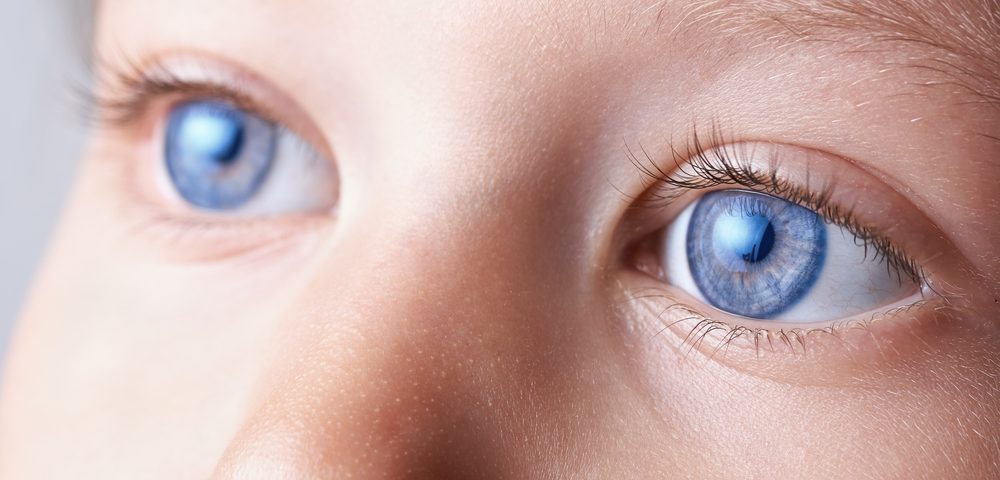Off-label use of Xeljanz and Olumiant effectively treated uveitis — a form of eye inflammation — and was well-tolerated by four patients with juvenile idiopathic arthritis (JIA) who had failed to respond to conventional or biological therapies, a case study shows.
A Phase 3 trial ( NCT04088409) in Europe is now recruiting participants to test Olumiant (baricitinib) in patients, ages 2–17, with JIA and uveitis. More information on locations and contacts is available here.
The study, “JAK inhibitors in refractory juvenile idiopathic arthritis-associated uveitis,” was published in the journal Clinical Rheumatology.
Advances in the treatment of uveitis in people with JIA include local and systemic corticosteroids, immunosuppressants such as methotrexate, and a host of other biological therapies.
Despite these advances, uveitis remains a significant cause of vision loss, and available medications are associated with long-term complications, treatment resistance, and inefficacy.
In an effort to find a new approach, investigators in Italy reported their experiences treating four JIA patients with uveitis using two medicines approved for people with rheumatoid arthritis — Xeljanz (tofacitinib, marketed by Pfizer) and Olumiant (baricitinib, by Eli Lilly and Incyte). All four patients had uncontrolled JIA and severe uveitis despite using disease modifying antirheumatic drugs (DMARDs).
Xeljanz and Olumiant block a family of receptors known as the Janus kinases (JAK) receptors. Biological pathways mediated by JAK receptors are involved in several autoimmune diseases such as inflammatory bowel disease and rheumatoid arthritis.
The first patient was a 43-year-old woman diagnosed with oligoarticular JIA at age 9. One year later, she developed severe and aggressive uveitis in both eyes, along with a cataract, a corneal disease known as band keratopathy, fluid build-up, and inflammation of the retinal vessels.
She underwent surgery to remove the cataract and was treated with a variety of biologics and DMARDs, which led to partial control of her arthritis and uveitis. However, she continued to experience severe complications to the retina, and eventually lost sight in her left eye.
The patient was started on 5 mg of Xeljanz twice daily. After six months, her arthritis was under control, uveitis was inactive with no additional complications, and her long-standing fluid build-up was completely resolved.
The second case was an 18-year-old woman diagnosed with polyarticular JIA and uveitis at age 1. Uveitis became chronic with persistent inflammation. The patient failed to respond to methotrexate and developed a cataract due to long-term use of corticosteroids.
Biological therapies — such as adalimumab (marketed as Humira by AbbVie) and infliximab (sold as Remicade by Janssen) — were given for four years but she stopped treatment due to reactions from the infusions and medication-related side effects such as skin rash. After additional biological medicines also failed, she was given a daily 5 mg dose of Olumiant in combination with a 15 mg weekly dose of methotrexate.
Despite having active arthritis, her uveitis became inactive so she stopped using topical corticosteroids.
The third case was a 37-year-old woman. She developed uveitis at age 3, one year after her JIA diagnosis. Arthritis was controlled with gold salts (a rheumatoid arthritis therapy) and corticosteroid injections over 15 years. However, at age 20, her condition required second-line steroid-sparing agents and other biological therapies.
Although biologics effectively controlled her arthritis and uveitis, she stopped treatment due to severe side effects, including gastrointestinal intolerance and skin lesions. She was then started on Olumiant. After 13 months, both arthritis and uveitis remained inactive, and she was able to maintain partial vision in both eyes.
The final case was a 21-year-old man with polyarticular JIA, who was effectively treated with conventional and biological therapies, including etanercept (marketed as Enbrel by Amgen). However, at age 15, he developed uveitis in the right eye and was then switched to different immunosuppressants and biologics. This change had no effect on his uveitis, and he developed a cataract that required surgery.
His visual acuity worsened after discontinuing treatments due to corticosteroid-induced side effects and lack of efficacy. At that time, he was given a daily 4 mg dose of Olumiant in combination with methotrexate and prednisone.
After six month, his uveitis was under control, fluid build-up was resolved with no additional inflammation, and his vision improved in both eyes.
“Overall, the treatment was well tolerated by all patients and no ocular discomfort, ocular side effects, or allergic reactions were registered,” the researchers wrote.
“We believe that JAK inhibitors may provide a new valuable treatment option in the therapeutic armamentarium [available treatments] for JIA patients with uveitis. This is particularly important for the most severe and refractory cases that are not adequately responding to conventional or biologic DMARDs,” they added.

